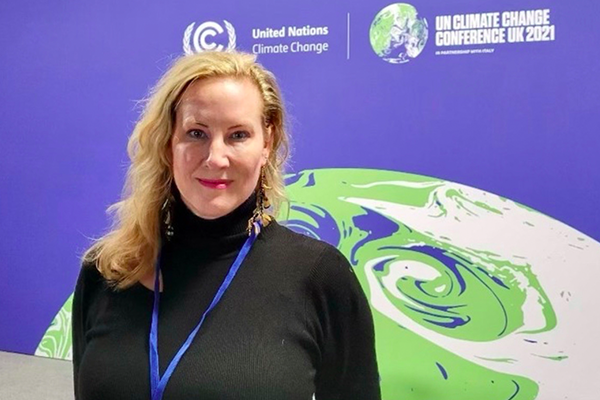December 16, 2021
(LOS ANGELES) – Established in 1992, in response to the scientific evidence supporting a rapidly changing global climate, the United Nations Framework Convention on Climate Change (UNFCCC) was adopted and became its own UN entity.
The Conference of the Parties (COP) was established as the primary annual UNFCCC conference dedicated to the intergovernmental climate change negotiations of the 197 parties (countries).
A few weeks ago the 26th meeting (COP26) was held in Glasgow, Scotland with ~25,000 delegates attending from governments, industry, academia, and NGOs and an additional ~15,000 non-delegates hosting events and protests near the meeting halls. The primary goal, as with all COPs, is to establish agreements amongst the parties to keep global temperature rise to 1.5 °C below pre-industrial levels.
To meet these goals, the parties agree to Nationally Defined Contributions (NDCs), which effectively serve as binding agreements as to what countries will do to achieve certain climate measures to mitigate and adapt to climate change scenarios specific to each region. These NDCs are complex but typically include funding mechanisms for projects that will decrease emissions (like investing in renewable energy and decreasing dependence on fossil fuels), increasing capacity around monitoring and analysis of the promised projects and developing adaptation measures for each party’s constituents which involves everything from creating more reliable infrastructure to better access to food, clean water, and sanitation.
This was my fifth COP and I attended as a head of party for the Reefquest Foundation, with part of my duties being to represent the Terasaki Institute Biomedical Institute (TIBI) and our work that is directly related to increasing access to affordable healthcare and providing alternative protein sources to a burgeoning population. Innovation is a cornerstone of TIBI’s scientific research and has been since our founding by Paul Terasaki, Ph.D., the father of viable organ transplants.
Dr. Terasaki recognized that “business as usual” was not enough to save lives. He had the forethought to establish our institute as a way to accelerate development of life-saving science for the benefit of everyone around the globe. For him, innovation played a key role in creating better healthcare and due to his efforts, untold lives have been saved and people with disabilities live better lives. It is with this spirit that that I attended COP26 – with the goal of spreading scientific knowledge and the ability to innovate health interventions that will have a profound impact on climate change adaptation.
Our message, and that of health professionals and scientists all over the world, was realized in a new and welcome way this year with the World Health Organization supporting an exhibition booth entirely dedicated to climate and health. Without question there was considerable content around pandemic preparedness and surveillance – topics that have long been near and dear to my heart. It was refreshing to see health professionals take a look back a realize that there was so much more that could have been done to prevent the spread of COVID and that we, the scientists, policy makers, program facilitators, inventors, and medical professionals around the world, need to step up our efforts to prevent, detect, contain, and treat outbreaks. I particularly enjoyed the sessions on transforming food systems. Topics ranged from creating healthy diets in Small Island Developing States (SIDS) by developing sustainable “blue food systems” to researching alternative sources of protein to feed a burgeoning global population. Global livestock production represents 14.5% of anthropogenic GHG emissions – reducing livestock consumption is critical not only to reducing those emissions, but also to providing equitable access to clean water, arable land, and increasing carbon sequestration through avoidance of deforestation. At TIBI we have been thinking about alternative food systems for some time and have developed a portfolio of research activities that can help us produce alternative sources of protein.
One such example is our alternative meat project. Benefitting from collective decades of research in tissue engineering and biomaterials, the researchers at TIBI have developed an innovative way of producing what is commonly referred to as “lab grown” or “cell cultured” meat. Not content with the state of alternative meat science, our researchers discovered new ways of “growing” this meat in a way that effectively reproduces meat in a lab environment that is identical to meat taken from growing and raising livestock and fish. Not only does this method avoid the use of arable land and potable water, it also significantly reduces the amount of Greenhouse Gas (GHG) emissions that comes from the methane produced by animals like cattle, or the loss of carbon sequestration from traditional crop farming and grazing.
At TIBI we know that the health of humans and the planet are tied together as one. To limit the devastating effects of climate change we must find new solutions to the greatest challenges faced by humanity. We must always work harder, smarter, and with an eye toward the future to bring about true positive societal impact.
This is just the beginning, and with the support of the Terasaki Family, our donors, board members, faculty, scientists, and staff, we remain resolved to create better opportunities for life-saving technologies and avoidance of GHG emissions to create a better world.

